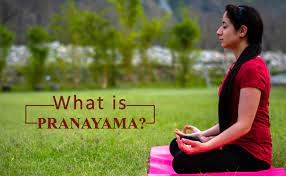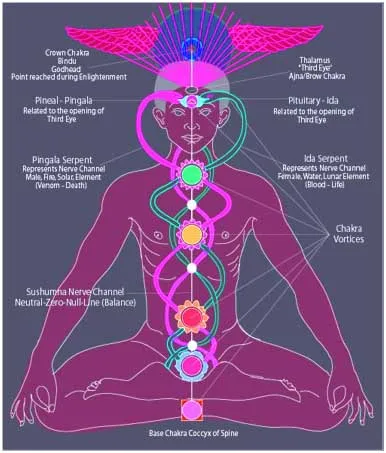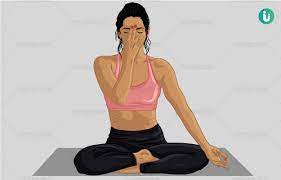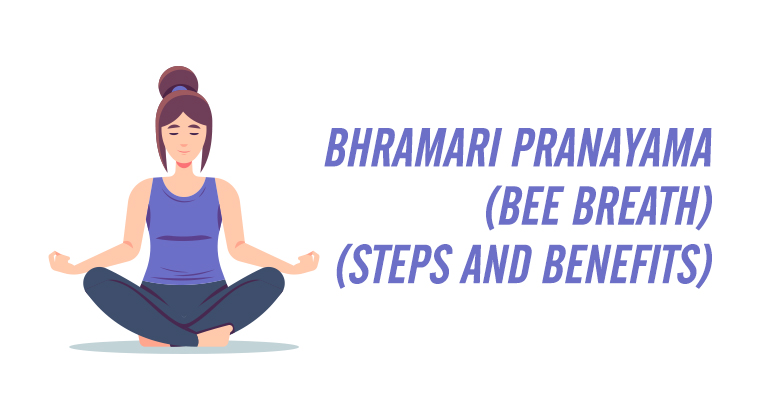What is Pranayama - Benefits and Types of Pranayama
Let us decide the meaning of the word, ‘Pranayama’ first. It is the expansion of breath, to be precise. Prana is the subtle energy that flows through the body, and its movement is facilitated and strengthened further, through proper breathing techniques. The term, ‘Pranayama’ also means control of breath. So, no matter, which way you see it or call it, it is all about your breath and the ‘Prana’, which flows through the body. In Patanjali’s Yoga Sutras, it points towards the practices, which can help you to attain higher stages of consciousness or awareness. You will study about Pranayama, in complete details as a part of the 200 hour yoga teacher training course.
When you are studying something, as important and effective as Pranayama, you ought to know about the background and history as well.

Background and History Of Pranayama
Pranayama, is the second-most loved practice in yoga today. Most people have come to realize, that it is life changing. Moreover, you will be amazed to know, that performing Pranayama alone, translates into practicing yoga. Asanas, may be regarded as only one part of yoga. Furthermore, it is quite incomplete without the proper breathing, that must accompany it. When you start practicing it on a daily basis, you will start to realize its benefits. It helps in more absorption of oxygen, to be exact. It has been in existence, for as long as life existed on earth. However, Lord Shiva gave proper shape and definition to this storehouse of energy. In fact, it is he, who started propagating the knowledge, through the Sapta rishis. Life starts with breathing, and stops, when you stop breathing. It is well-preserved in many of the Vedic texts as well.
For your knowledge, we are going to divide the times, when it came about and occupied an important place in practices and rituals.
Vedic Period – If you delve into the study material offered in the yoga teacher training in rishikesh, you will be able to read about Pranayama, as it had been, in this period. In these times, Pranayama was intertwined with the day-to-day rituals, chants, and other religious affairs. There was this Gurukul system of education, which dominated the society. Students had to perform mantra chanting amidst their daily studies. And, most were required to be done, in one breath. If the students did not have sufficient lung power, it would have been almost impossible to do so. So, when these long chanting sessions were taking place, Pranayama was also practiced, though not consciously.
Then again, when the rishis and religious commons performed havans and rituals in temples and other holy sites, they had to recite mantras. There was a tradition, according to which, you had to hold your breath, before offering something to the fire. So, you can say, that people in those times were also capable of performing Pranayama, but without any effort on their part. When you control the breath, you are also able to control a part of your mind. Even today, the main purpose of Pranayama is to achieve control over the mind.
You must know, in this context, that Pranayama was known by different names back in those times. In the Rig Veda, it was mentioned as ‘Asu Niti’. ‘Asu’ meant ‘prana’ or breath, and ‘Niti’ meant control. You could control the prana, through several means. They include Mantra chanting, Upasana, and Om chanting, as well. If you go back to Yajur Veda, there it is referred to as ‘Angira Sahitya’. It improved the physical and mental strength apart from longevity. In these times, the Gayatri Mantra was also termed as a sort of Pranayama, as you required to chant it in one breath. There was this special type of Gayatri Mantra, which you had to chant in 24 seconds, continuously. That meant, the incumbent had to chant the same, during 24 seconds of Rechaka.
⦁ Smriti Literature Period – Puraka, Kumbhaka, and Rechaka, are the three stages of Pranayama, which were mentioned during this period. However, the ratios were not mentioned. Pranayama was mainly considered as a part of the rituals. The main purpose of performing it was cleaning the impurities of the physical, mental, and spiritual bodies.
⦁ Purana Literature Period – If you have ever read about the Puranas, you would find the mention of Om chanting. Some of the texts mention Pranayama as ‘Pranavatmak Pranayama’. The reason being, that it was done with ‘Pranava Japa’ or Om chanting. During this time, the ratio of Puraka, Kumbhaka, and Rechaka was 1:1:2 or 1:2:2. However, the sages and rishis laid more importance on the art of holding the breath.
⦁ Bhagavad Gita Period – In the Bhagavad Gita, you will find a mention of Pranayama as oblation. The sages and seers called it ‘Pranayama Parayana’. It was said, that the mortals can sacrifice their exhalation, at the cost of their inhalation, or the other way around. Many others further believed, that controlling one’s hunger was a part of Pranayama practices. Few even considered breath restraint, as the ultimate practice. In 8th chapter Bhagvad Gita you will find the mention of ‘Prana’ as the vital energy of the body. The practice was called as Yoga Dharana or Yogic Concentration.
⦁ Patanjali Period or stage – It is during this time, that Patanjali took away the religiosity from the practice. In the 400 BCE, Patanjali considered Pranayama as inhalation, exhalation, and retention. He describes the holding of breath as 3 phases. If you delve into the religious texts, you will find their mention as Bahya Vritti, Abhyantar Vritti, and Stambha Vritti. You could actually use these phases, to check the efficacy of your breathing cycles. He also managed to give Pranayama, a different status. He connected the same to psychological and spiritual repercussions. The 300 hour yoga TTC in Rishikesh mentions about such stages in complete details.
⦁ Tantra Period – In this era, the practice was connected with Tantra sadhana. It described at least 112 techniques of meditation. It was believed that breath awareness brought with it, inner awareness as well. The breathing practices were also connected with Kundalini Tantra practices, in which the sadhakas gets alignment, by achieving mastery over his or her breath.
⦁ Shankaracharya Period –In this period, ‘Nadi Shuddhi’ gained a lot of importance. The texts from these times, mentioned that the free flow of Prana was extremely important for internal purification. Moreover, Shankaracharya said that all the yogic practitioners must practice Pranayama with bandhas, to help with Kundalini arousal.
⦁ Hatha Yoga or Modern Period- This is the modern period of yoga, with yoga well-suited for the modern practitioner, and that is what you will learn and practice at any of the renowned yoga schools in India. You will learn about the different types of Pranayama in accordance with the Hatha Yoga Pradipika, which is one of the best texts on Hatha Yoga.
Types Of Pranayama
Bhramari Pranayama – It is one of the most common Pranayama techniques, that you can start your journey with. It is a calming breathing modality, which can affect your nervous system, positively. You must take on the Shambhavi mudra with your hands, while practicing this Pranayama. It is best to practice this early in the morning, when there are fewer distractions around you. When you exhale, you let out a humming sound, emulating the bees. You ought to focus on making a soft and steady sound, instead of a forceful one. Bring the awareness to your Ajna chakra, located at the center of the eye brows, while keeping the body absolutely still. Your chin will be tucked into the chest, while doing this asana. Once, it is over, straighten the neck and repeat all over again, starting from a deep and active inhalation.
⦁ Kapalbhati Pranayama – It is also regarded as a Shatkarma kriya. You can get over any sort of tiredness, if you practice this Pranayama on a daily basis. Moreover, it is a detoxifying pose. It is also renowned as the Skull Shining pose. Although, you may initially feel that it is an easy Pranayama, it is a tough one. To be more open about it, this Pranayama is technical. Be seated in any of the meditative poses, and inhale normally. Your palms should be on the knees, facing upwards.
Additionally, all your focus should be at the core. You must ensure to keep the spine straight and elevated. Your exhalation will be more impactful, than the inhalation. It is said, that you can throw out most of the toxins from the body, including the respiratory system when you perform the forceful exhalation. You can perform this Pranayama at least 20 times, with regular practice. Relax, once you are done. If you join a yoga retreat in Rishikesh, you will be definitely guided through this practice.
⦁ Nadi Shodan Pranayama – It is also called Alternate Nostril breathing. It can activate your nervous system, in the best manner possible, by practicing this asana, on a regular basis. It is quite simple and effective in cleansing the mind and entire body as well. The meaning is also quite easy to decipher.
Nadi means channel, and Shodhana means purification. So, the meaning is channel purification. You can do this practice, at any time of the day, but on an empty stomach. You must sit in a comfortable pose, while doing this asana. You can start with practicing the Vishnu mudra, with the right hand. Exhale completely and close the right nostril. Inhale through the left nostril. Thereafter, release the right nostril and exhale through it. Block the left nostril, and then inhale through the right and so on. You need to complete a full cycle. 10-12 cycles are adequate for your enrichment.
⦁ Sitali Pranayama – This is one of the best Pranayamas, which you can practice in the summer months. After from the calming effects, this Pranayama can cool the body and mind. Moreover, this Pranayama also rekindles the digestive fire. So, if you have any digestive issues, those will also be solved in no time. This practice is best for all those, who are governed by Pitta dosha. You need to develop the ability to roll in the lateral edges of the tongue. It should resemble a tube. If you cannot do this, you can also practice the alternate variety, called Shitkari Pranayama. Be seated in a meditative pose, while doing this Pranayama, and keep the hands on the knees, with the palms facing upward.
Close both your eyes and breathe through the nose. After you have attained calmness and have grounded yourself, you can start your practice.
Stick the tongue out, and roll the sides, to form a tube-like structure. Inhale the air through the curled tongue and fill the abdominal cavity and lungs. Then after you are done, draw the tongue in and close th mouth. Hold the breath inside the mouth for some time. You can even swallow the breath. Slowly let out the stale air through the nostrils. This completes a single round of Sitkari. When you are ready to call it a day, start breathing normally and deeply and stop. You will experience calmness and serenity inside you.
These are a few of the most important Pranayamas that you will learn at the Rishikesh Yoga School. However, that is not all. There are more than 14 Pranayamas, that you may come across. Practice Pranayamas and gain a hold over the mind and body. The soul will closely follow. You will get a lot of benefits from such breathing techniques. Moreover, your longevity and quality of life will be affected. Do recall, that the longest living animals on earth breathe slowly. Tortoises are one of them. That is because, they have a breathing rate of 4 breaths every minute. And, that is quite a feat. So, start learning breathing techniques from the best schools and improve your life and health.





